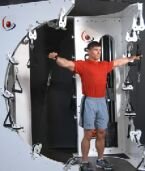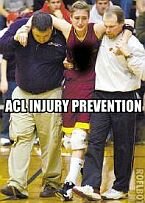Rotator Cuff Relief!
What is the solution to rotator cuff problems?
The rotator cuff solution is
ROTATOR CUFF RELIEF:
The Ultimate Guide to Rotator Cuff Performance and Injury Prevention
| EBook Only ... $9.99 | DVD Only ... $19.99 | EBook and DVD ... $24.99 |
| SAVE $5.00! | ||
Click Here BEFORE YOU PAY for Immediate Download Instructions!
For a bound edition of Rotator Cuff Relief click below
Elite FTS.
* Did you know that many commonly prescribed rotator cuff exercises are dangerous?
* Do you want to learn why so many people actually get tendonitis from working out?
* Do you know how to combined strength and flexibility exercises?
* Are you already injured and tired of missing training sessions because of shoulder pain and the fact that you may be unsure how to modify your training accordingly?
* Did you know that you need more than just "shoulder" exercises to prevent shoulder injuries?
VALUED AT OVER $100.00!
BONUS #1: BE CAREFUL WHEN PERFORMING THESE EXERCISES
Do you really know how to prevent injury causing errors when you work out? You MUST read this section.
BONUS #2: DO NOT PERFORM THESE EXERCISES
Do you know what exercises to outright avoid? Read this.
BONUS #3: SPORTS PERFORMANCE PREPARATION- THE WARM-UP
You know the days of "take a jog and static stretch" are over. Now learn exactly what to do!
BONUS #4: LISTEN TO YOUR BODY: AN INJURY PREVENTION GUIDE
Training is worth nothing if you are always getting hurt. Prevention is the key. Read this section!
BONUS #5: HOW TO USE THE STICK
Never heard of "The Stick?" Update and improve your training with this incredible tool. Learn how to use The Stick in this section.
BONUS #6: HOW TO USE THE FOAM ROLLER
You've seen those white foam things in the corner of your gym. Now learn how to use one!
This is a $39.99 VALUE! The Guide will be sent to you separately after you order! You cannot find this information so well organized, so up to date, and so necessary anywhere!
MY GUARANTEE
Read the book and bonuses and try the exercise routines for 60 days. If your shoulders do not feel better, I'll refund 100% of your money - no questions asked!
TAKE A LOOK INSIDE ROTATOR CUFF RELIEF
This manual will:
* Teach you a science-based progression exercises to both prevent and alleviate shoulder pain
* Teach you proper exercise technique
* Teach you to avoid the most common weightlifting errors that cause rotator cuff problems
* Eliminate your fear of training because of prior rotator cuff injury
* Increase throwing and hitting power
* Show you a proper dynamic warm-up for sports
* Show you how to use a foam roller
* Show you how to use THE STICK
ROTATOR CUFF RELIEF reviews rotator cuff anatomy and injury mechanisms. A detailed program of rotator cuff strengthening and stretching exercises is explained with clear pictures and exercise descriptions. The real solution to preventing rotator cuff injuries is that same exercises cannot be performed over and over again AND that the rotator cuff works synchronously with other muscles and these muscles must be strengthened and stretched as well.
The shoulder is a ball and socket joint. The arm bone (humerus) ends in a ball shaped surface (humeral head) that fits into a very shallow socket (glenoid). This socket is part of the wingbone (scapula). This shallow socket allows the shoulder joint tremendous range of motion.
The rotator cuff is a group of four muscles (supraspinatus, infraspinatus, teres minor, subscapularis) which rotate the humerus and hold the shoulder in place by keeping the humeral head in the proper position inside the glenoid socket.
These muscles allow everyday repetitive motions like scratching behind your head or back, painting, waxing, using hand tools, reaching, and lifting overhead. They are used extensively in athletic activities like throwing a ball, serving a tennis ball and driving a golf ball.
Chronic wear and tear or a fall or collision can cause injury to the rotator cuff. It is not uncommon for a patient to have intermittent shoulder pain for several years which is not completely relieved by rest and anti-inflammatory medication. Symptoms may include pain in the front, side, back or deep inside the shoulder especially with overhead movements. Putting on a bra, shirt or coat may be painful. To properly diagnosis a rotator cuff injury a complete examination of the shoulder and neck must be done.
Injury to the rotator cuff comes in the form of muscle strain and tendonitis. There are three grades of strains. Grade I is a mild tear in the moderate tear which hinders range of motion with mild to moderate pain. Grade II is a moderate tear with a significant loss of range of motion with moderate to severe pain. Grade III is a severe or complete tear of the muscle which severely limits muscle which allows complete or almost complete range of motion with little or no pain. Tendonitis is an inflammation and fraying of the tendon (area where the muscle attaches to the bone).
When these muscle and tendon tears heal the new tissue is called scar tissue. There are four problems with scar tissue: 1) It is weaker than the original muscle tissue, 2) It is less elastic (flexible) than the original muscle tissue, 3) It forms in all different directions, not just along the lines of the original muscle, and 4) Many small nerve endings grow into the area. These changes make the injured area very painful when it is moved too far or too strenuously.
Treatment of rotator cuff injuries must include techniques like Active Release Techniques® and Graston Technique to breake up this scar tissue. Ultrasound and electrical muscle stimulation can help speed healing as well.
Proper exercise to strengthen and gently stretch the rotator cuff muscles is important. Rehabilitative exercise should not cause pain while performing the exercise and little to no pain afterwards. There are many exercises which can be done. When returning to exercise remember R.E.S.T.: Resume Exercise below the Soreness Threshold.
See How Many Pitches Should I Allow My Child To Throw? by, James Andrews, MD
Value of Rotator Cuff Injuries in Maryland from the The Maryland Injury Lawyer Blog
| The Ultimate Nutritional Lie Detector Test LEARN MORE  |
Kettlebell Rehab

Click Here
To See How Kettlebells will transform your body!
Vortex Rehab

Click Here
To See How This
Revolutionary Machine
Can Help You!


















